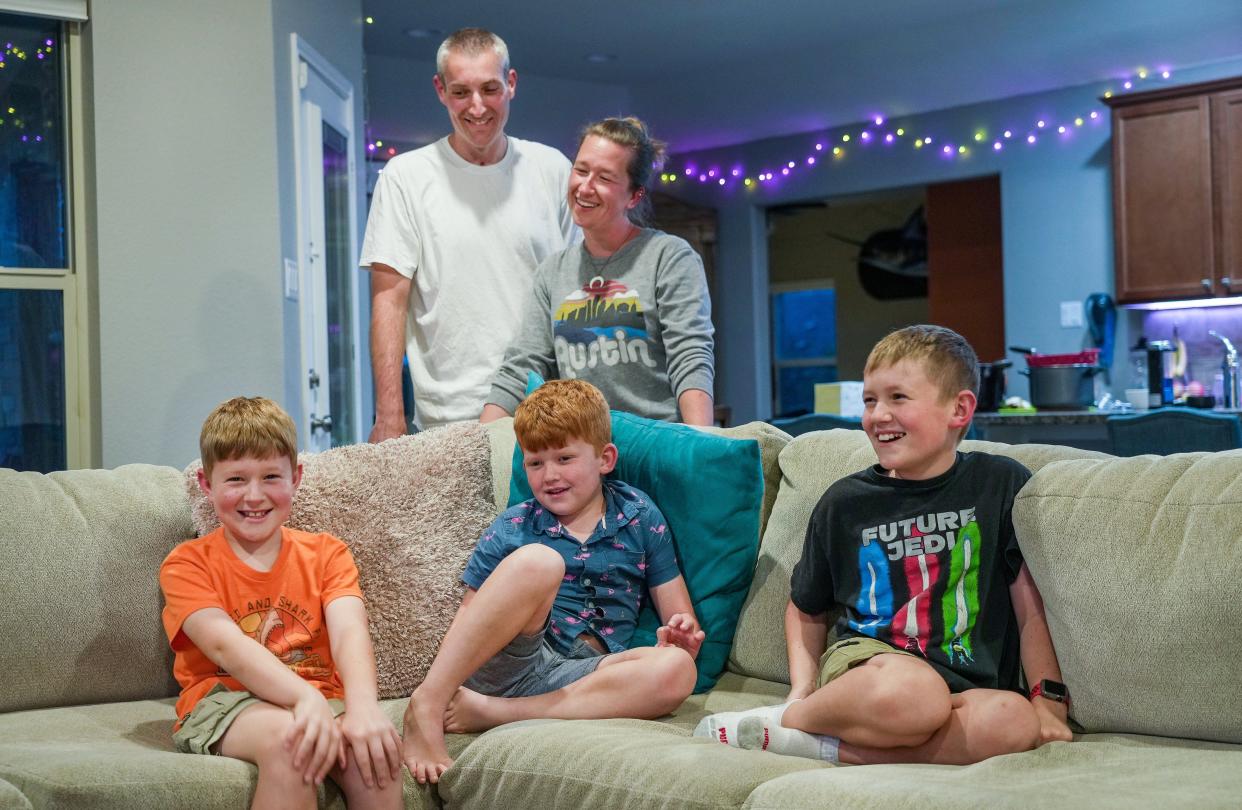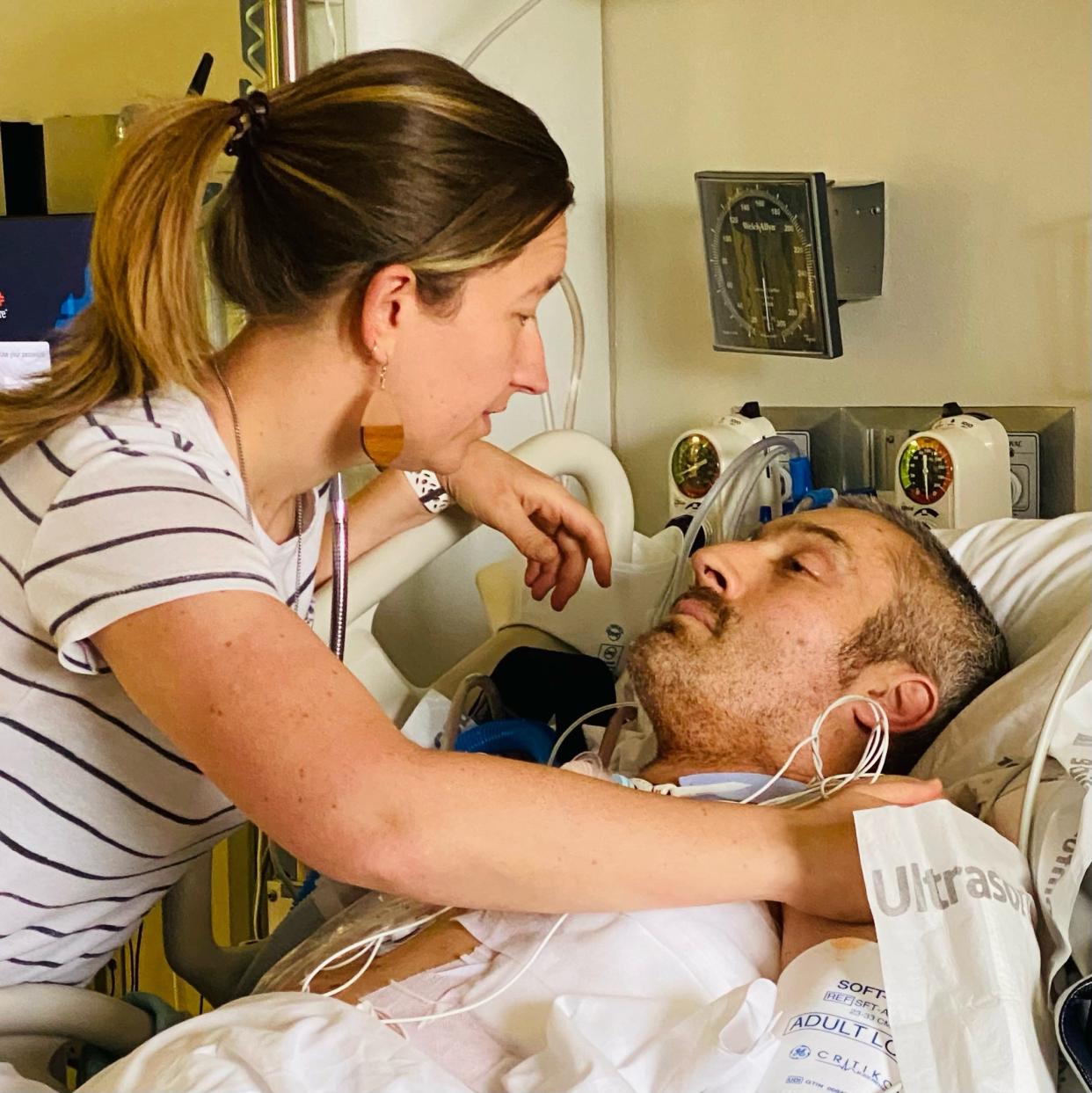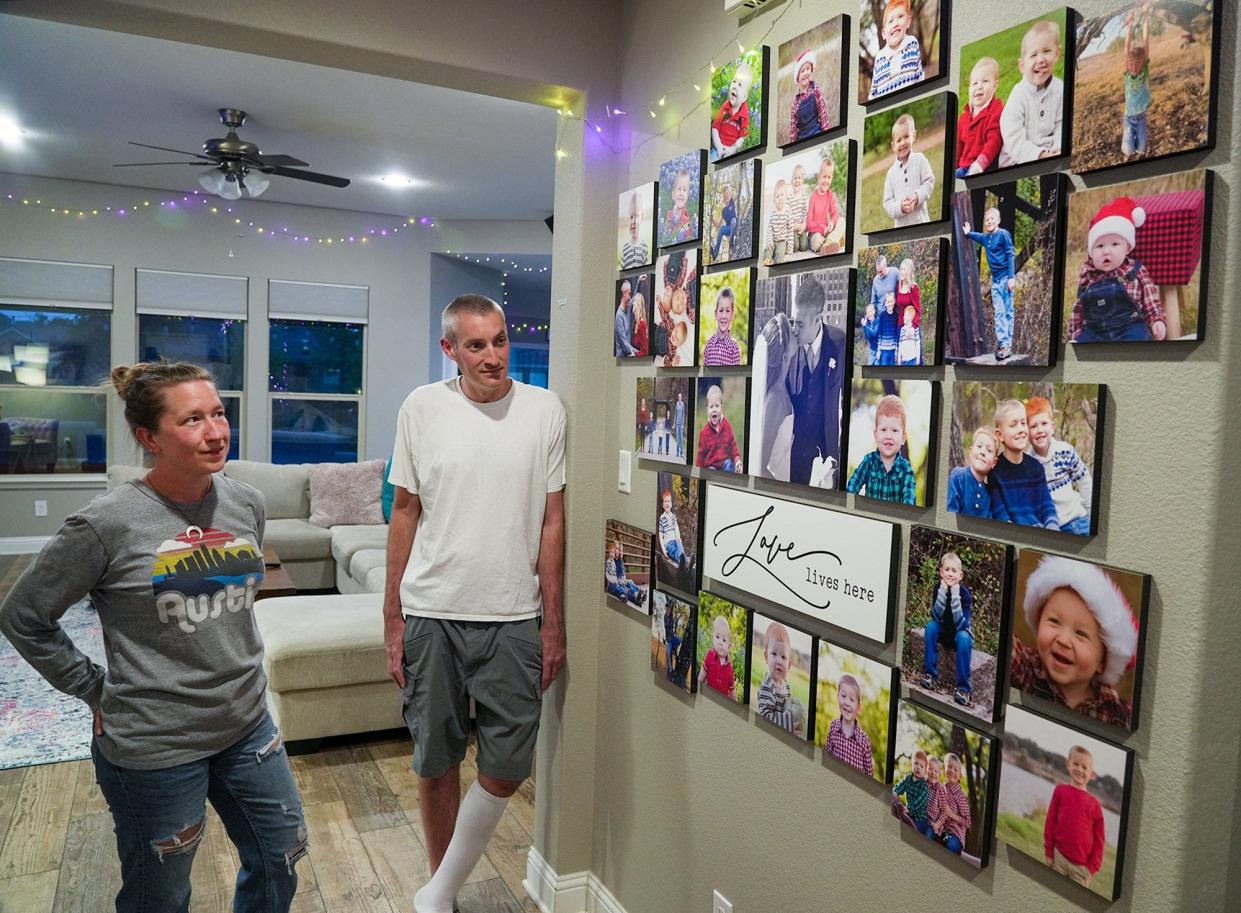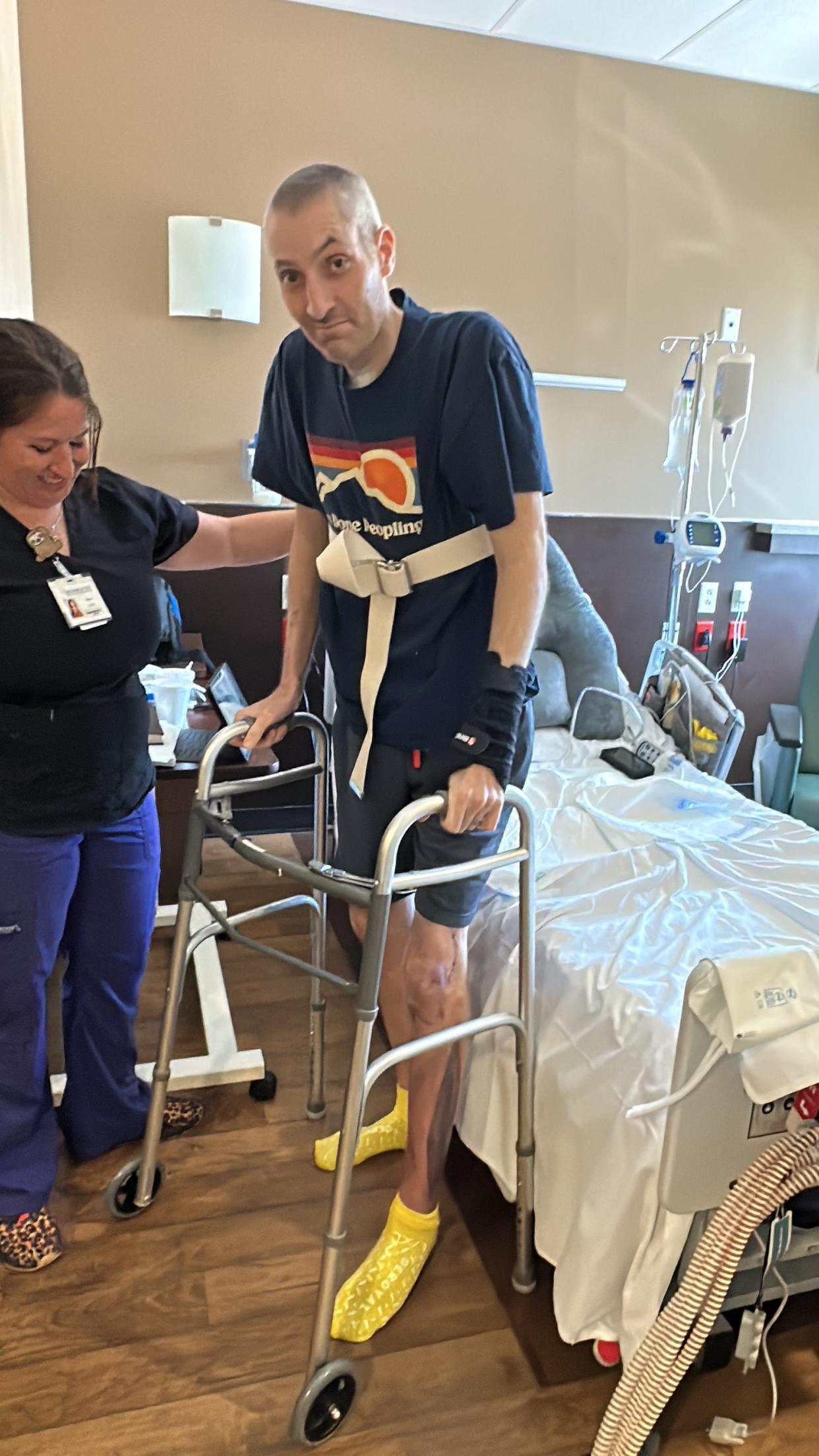Round Rock doctors try innovative procedure to fix a torn heart from motorcycle accident
Al Peterson remembers riding his motorcycle on Parmer Lane at 2 p.m. May 13 when an SUV pulled out in front of him.
The Leander man, 41, said he didn't have any time to react. He hit the SUV on the side, became pinned under it and couldn't pull himself out. His helmet saved his brain.
Someone from the Fire Department told him, "You're going to be OK."
That was the last thing Peterson remembered.
Within minutes of the accident, Peterson's wife, Cristi, got a phone call from the Life360 app to tell her Al had been in an accident and they had called the police.
"I thought it wasn't real," she said.
Peterson had fractured his pelvis, left leg, left wrist, left foot and several ribs. He had internal damage to his liver and spleen, he lost a kidney, and he had a punctured lung. The aorta at his heart had a tear that needed to be repaired, but doctors had to stabilize the bleeding and try to secure some of the broken bones before they could mend his heart.
They would use a new device, worth almost a million dollars, to fix his heart.

Trying to put Al Peterson's heart back together
While doing all of those initial surgeries to stabilize him, the team at St. David's Round Rock Medical Center kept Peterson's blood pressure and heart rate low to prevent the aorta from tearing more.
"The worst-case scenario was it would have ruptured and he would have bled out into his chest," said Dr. Nicolas Zea, a vascular surgeon with Cardiothoracic and Vascular Surgeons who practices at St. David's Round Rock.
Lower blood pressure helps the heart but can damage the other organs such as the kidneys. They couldn't leave his aorta unrepaired.
Zea thinks of himself as a plumber who needs to put in new pipe to prevent the existing pipe from leaking. In Peterson's case, the location of the tear not only affected the aorta but was close to an artery that provides blood to the left arm.

If Zea did the traditional repair, it would mean open heart surgery, which could put Peterson at a greater risk for infection because it would be a major operation on a person who had suffered significant trauma. Zea also worried about the recovery from another long period of anesthesia.
Instead, Zea chose to insert a thoracic branch endoprosthesis, a stent within a stent that when inserted using a catheter starts to unfold, sealing the tear in the aorta and then unfolding a second stent into the artery to the arm.
On May 18, in less than an hour, Zea was able to go into Peterson's body with a catheter and wires in the groin and arm, a relatively new procedure that hadn't been done in Texas in a trauma case to fix a transection. It had been used only for aneurysms, Zea said.
"Not only did we save his life by preventing the aorta from rupturing, we preserved the blood flow to open his hand," Zea said.
No quick fix for a dramatic accident
Peterson's recovery was long. He was on a ventilator and had to have a tracheostomy. He had two bouts of pneumonia.
When he woke up 2½ weeks after the accident, he thought he would be able to get out of the hospital within a week. But it took another seven weeks, including a week of in-patient rehabilitation, before Peterson was finally able to go home July 30.

Physical therapy helped him learn how to function again. He was physically weak and lost 25% of his body weight. He had to learn to get out of bed, eat, drink and talk once the trach was removed.
Within six weeks, he was back at work in his job as a credit manager for a building supply company.
"I was going stir crazy," he said.
These past six months, though, Peterson said were the "worst months of his life," both physically and mentally.
"The mental part was something I haven't experienced before," he said.

Cristi consistently reminds him of the progress he's made.
"It's been amazing," she said. "He's my superman. ... If anybody was going to survive this, it would be him."
Peterson's transection is completely healed, Zea said. "It looks like nothing ever happened.
"He's going to be my patient for life," Zea said. "We want to make sure that the aorta continues to stay stable, and we want the same with the graft going to the left arm."
Peterson believes he will again ride his motorcycle, a 1939 Harley Flathead that his grandfather bought new. It will take a year or two and $60,000 to restore, Peterson said.
He has agreed with Cristi that he will only ride it in the neighborhood.
This article originally appeared on Austin American-Statesman: Round Rock doctors fix torn heart with stent within a stent procedure
